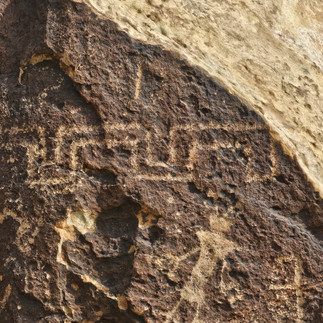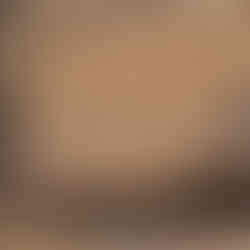Parowan Gap: A Journey Through Time with Petroglyphs and Dinosaur Tracks
- Dan Wagner

- Apr 17
- 3 min read
Starting over a thousand years ago, Native Americans journeying through the area now known as Parowan Gap paused to carve intricate designs into the smooth boulders on the eastern side of the gap. Over the next millennium, multiple Native cultures, predominantly the Fremont, etched their stories into stone, leaving behind symbols of their ideas, significant events, and spiritual beliefs—perhaps connected to religious ceremonies or hunting traditions. Today, we know this area as the Parowan Gap Petroglyphs.
One mile east of the Gap lies another interesting site, this time in the form of dinosaur tracks. Located at the base of a towering cliff of conglomerate rock, lies a maze of boulders, some the size of small vehicles. Here, a small collection of dinosaur footprints dating back 65-75 million years ago can be found.

Visiting the Parowan Gap Petroglyphs
On my way back from Las Vegas to St. George, I finally took the time to stop at Parowan Gap and explore the Parowan Gap Petroglyphs. I pulled into the large parking area and made my way to the paved walkway, which is lined with interpretive signs that share the fascinating history of the site.

The first panel I came across, just a short distance in—no more than a hundred feet—was one of the most striking: The Zipper Panel. To the Paiute, it tells the story of the great migration from old world to new.. It depicts a long trail on which many experienced famine, drought, water crossings, cold, ice, and hot sun. The panel also talks of a great Leader. When the people arrived in this new land, conflict arose and the Leader was killed. The arrow inside his head, which touches the top of his head, indicated he knew that he would die. He is shown only as a head and body (no arms) and upside down to indicate that he died. Other, more modern day interpretations suggest that the panel may function as a map, a solar calendar, and a component of a broader system involving outer cairns.

As I walked through the site, I find that some of the carvings clearly depict animals and human figures, but most are abstract—circles, spirals, lines, and dots that intertwine and overlap, suggesting that some petroglyphs may have been added more recently than others.

Further along, I reach another incredible panel. According to the Paiute, it depicts people traveling through rain and snow, the womb of a woman with her legs spread, the birth of four children, a person dying under water, a collapsing roof that killed many people, a person who was crushed to death, a path leading from a place of suffering to safety, and much more.

The paved path winds for less than a quarter mile, revealing more and more rock art with every step. I don’t think I went more than 20 feet without discovering another panel, each one more fascinating than the last.

When I reached the far end of the gap, I turned around and made my way back to the car—still spotting new carvings I had missed on the way out. What should have been a quick walk stretched into about 45 minutes because I was so absorbed by the incredible artwork etched into the stone. It was well-worth the time and far exceeded my expectations.
Visiting the Parowan Gap Dinosaur Tracks
After exploring the rock art, I head a mile east to the Parowan Gap dinosaur track site. At the trailhead, a small informational sign offers a preview of what’s to come.

Just a short walk down the path, I come across a large boulder resting to the left of the trail. A metal marker beside it identifies the rock as bearing a hadrosaur footprint.

Hadrosaurs were three-toed reptiles with a toothless, beak-like mouth. They were among the most common dinosaurs in North America during their era. Typically weighing several tons and stretching anywhere from 10 to 40 feet in length, these plant-eaters had hundreds of tiny teeth suited for grinding vegetation and long tails for balance. While they usually grazed on all fours, scientists believe they could awkwardly rise onto two legs to flee from predators—though their slow movement likely made them easy targets for larger, carnivorous dinosaurs. A bit farther down the trail, I spot another hadrosaur track.

Unfortunately, this one has been vandalized—its middle toe chipped away from the stone.

The trail continues for about half a mile beyond the second boulder, but I didn’t come across any additional tracks.
Much like the Parowan Gap petroglyphs, the dinosaur track site is well worth the short time it takes to experience a unique piece of history. It's a great addition to any visit to the area. As always, please remember to treat these sites with respect—these are sacred remnants of the past. Look, learn, and leave them exactly as you found them.
_edited.png)









































Comments